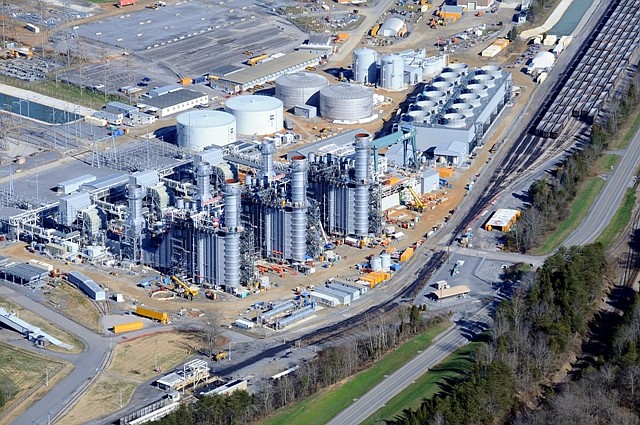A Knoxville technology startup has begun producing a new type of carbon nanotube at a Tennessee Valley Authority gas plant that could serve as a model for carbon reduction from fossil fuel power plants across the nation.
SkyNano, a developer of a manufacturing technique to make carbon-based nanomaterials from carbon dioxide and electricity, announced Wednesday that it completed the first-ever production of carbon nanotubes from flue gas. The carbon nanotubes, which are about the size of a human hair, were made at TVA's John Sevier Combined Cycle Plant near Rogersville, Tennessee.
SkyNano's carbon-based nanomaterials can be used in products such as tires, ink and packaging and could prove especially beneficial in improving the electrical properties of lithium batteries used for battery-powered vehicles and consumer electronics.
"We proved power plant flue gas emissions can be captured and turned into valuable, high-quality materials," Anna Douglas, the CEO and co-founder of SkyNano, said in a statement Wednesday. "This demonstration is one of the first of its kind, showing the ability to make a marketable product from real-life power plant flue gas.
Douglas said the next step is to scale up the technology so other utilities can convert flue gas into valuable carbon nanotubes.
"This unique carbon capture will lead to development of scalable technologies for power plants nationwide - streamlining the path for cities and states to meet bold carbon reduction goals," Douglas said. "SkyNano is setting the standard worldwide for carbon capture and utilization."
SkyNano officials said carbon nanotubes can also be used to strengthen products such as wind turbine blades and boat hulls, and sporting goods such as tennis rackets, baseball bats and bicycle frames. Carbon nanotubes at the molecular level are 100 times stronger and one-sixth the weight of steel and conduct heat and electricity similar to copper but without concerns about corrosion.
Manufacturers normally synthesize nanotubes from hydrocarbons in an emissions-heavy process, so producing them through the transformation and utilization of carbon dioxide from power generation is a major technological breakthrough that could help decarbonize the grid even while keeping natural gas generation online.
SkyNano is one of 11 projects that shared $17 million in grants provided in 2020 through the U.S. Department of Energy's Office of Fossil Energy for cost-shared research and development projects for carbon utilization. Skynano received $2 million of Department of Energy grants and $500,000 of other funds for its research and test projects, according to officials with the Department of Energy's Carbon Utilization Program, which administers the grants.
"According to the U.S. Energy Information Administration and the International Energy Agency, fossil fuels will continue to power our world well into the future," Under Secretary of Energy Mark W. Menezes said in an announcement of the grant funding. "Therefore, it is our responsibility to ensure these fuels are utilized as cleanly and efficiently as possible."
The John Sevier gas plant where the flue gas was recaptured to make the carbon nanotubes was originally the site of a coal plant TVA erected in 1957 and ultimately shut down in 2012. The coal plant was replaced with a combined-cycle natural gas power generator.
Dr. Joe Hoagland, vice president of TVA Innovation & Research, said the federal utility is eager to work on new technologies for carbon capture at its natural gas plants and will try to aid SkyNano as it expands its operations.
"Carbon nanotubes are increasingly used in electronics, power cables, batteries and other products," Hoagland said in Wednesday's announcement. "This is a technology that can capture and remove carbon in a productive manner."
- Compiled by Dave Flessner
